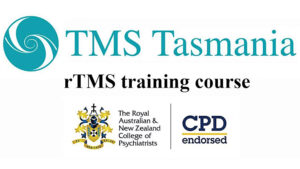NAPP notes the article in the Weekend Australian 4 May on ‘Psychiatrists are fleeing the public system in record numbers’ by Natasha Robinson, Health Editor.
The article highlights a severe workforce crisis in public sector psychiatry in Australia, with a significant number of psychiatrists leaving their positions due to various factors such as burnout, low salaries, and inadequate support. Key points include:
- Vacant Positions: As many as one in four public sector psychiatry positions are vacant in some states, leading to critical shortages in staffing in psychiatric wards of public hospitals.
- Reliance on Locum Psychiatrists: State governments are spending hundreds of millions of dollars annually to hire locum psychiatrists to fill staffing gaps, with some positions routinely filled by locums.
- Workforce Shortages: The shortage of psychiatrists is particularly acute in New South Wales (NSW) and the Australian Capital Territory (ACT), where a significant percentage of positions remain unfilled or are filled by locums.
- Impact on Patient Care: The workforce crisis is negatively affecting patient care, with psychiatrists feeling pressured to discharge patients prematurely, leading to rapid readmissions and a revolving-door situation in mental health inpatient units.
- Potential Solutions: There is a need for increased support for mental health services in the community, as well as addressing factors such as low salaries and high workload that contribute to psychiatrist dissatisfaction and attrition from the profession.
- Concerns for Patient Safety: Without adequate staffing levels, hospitals are described as “just not functional,” posing safety risks for patients.
Overall, the article underscores the urgent need for systemic changes to address the workforce crisis in public sector psychiatry and ensure that patients receive the care they need.
NAPP has been drawing attention to these problems for some time. NAPP has also made recommendations about how to improve the situation.
Psychiatrists are fleeing the public system in record numbers
Saturday, May 4, 2024
THE AUSTRALIAN
EXCLUSIVE
By NATASHA ROBINSON, HEALTH EDITOR
As many as one in four public sector psychiatry positions are vacant in some states as despairing doctors are forced to discharge patients from psychiatric wards weeks before they are fully recovered from spells of psychotic illnesses.
The escalating workforce crisis is seeing state governments forced to spend hundreds of millions of dollars every year paying locum psychiatrists to plug the gaps in staffing in critically overloaded inpatient units in public hospitals around the country.
The Australian can reveal that one in four staff specialist psychiatry positions overall in public hospitals in NSW – where schizophrenic Joel Cauchi recently killed six people in a mass stabbing at Westfield Bondi Junction – are currently unfilled, with the figure far higher in some health districts.
Of about 100 staff specialist positions, 40 are currently routinely being filled by locums who are being paid between $2500 and $3000 a day.
The situation is just as bad in the ACT, which in March 2024 recorded a public sector psychiatry workforce shortage of 26.5 per cent.
Of the 55.65 full-time equivalent psychiatrist positions funded, in March 2024 40 were filled, but 18 per cent of those positions were filled by locums and more than 8 per cent of positions were left completely unstaffed. Medical staff salary funding has not increased in more than five years.
Other states are also experiencing critical shortages as burnout hits overworked public hospital staff who are leaving en masse for the private sector, where they can earn double the salary or more.
Based on a large-scale survey of the profession, The Royal Australia and New Zealand College of Psychiatry estimates that 30 per cent of NSW’s psychiatrists are considering leaving the profession in the next five years and 43 per cent of the workforce intend to retire in the next decade.
The current psychiatry workforce only meets 56 per cent of the national demand for psychiatrists in mental health services, according to the College. Mental health patients make up as many as half of the patients who use ambulances to arrive at emergency departments.
Overall emergency department presentations have doubled over the past two decades, with mental health making up a significant part of the increased burden.
RANZCP president Elizabeth Moore said there was an overwhelming view across the profession that the workforce crisis was negatively affecting patient care. That situation was exacerbated by severely inadequate support in the community for people with chronic mental illness, who were frequently homeless and made up about a quarter of the population in the nation’s prisons.
“Sometimes you have people who can’t get into hospital because there are other people in the hospital who can’t be discharged because there’s nowhere for them to go,” Dr Moore said.
“Psychiatrists want to do the best by their patients, but they are feeling so pressured, they feel they’re unable to give the best care. They’re still giving adequate care but it’s not the best care. Then that leads to people wanting to leave the workforce.”
One senior psychiatrist in NSW said the situation had never been worse in mental health inpatient units, where people were admitted or discharged based on risk rather than the actual state of their health.
People are being pushed out of hospital weeks before they are fully well, and end up being rapidly re-admitted in a revolving-door situation.
“It’s never been anything like this,” the psychiatrist said.
“On the ground it’s very difficult to maintain one’s strength and morale as a clinician. The other big change is that there’s just a culture or perhaps an exaggeration of the culture of just churning patients through.
“There are loads of patients with treatable conditions that don’t get treated. Or if they do get treated they get discharged too soon and they come back.”
Canberra psychiatrist Jeffrey Looi, the president of the ACT branch of the Australian Salaried Medical Officers Federation and the Psychiatrist Federal Council Representative for the Australian Medical Association, said the steep decline in the public sector psychiatry workforce had left hospitals in a state of being “just not functional”.
“Without adequate staffing levels and being able to hire enough staff, it becomes unsafe for patients,” Professor Looi said. “It’s dangerous for patients. We cannot make up the shortfall that we’re going to face for the foreseeable future.”
RANZCP Queensland branch spokesman Brett Emmerson said the staffing shortage was also severe in Queensland, especially in rural areas.
“Certainly, since Covid, the number of people needing care has gone up,” Dr Emmerson said. “So the units are always 100 per cent full, and you are forced to discharge your least sickest patient or least risky patient to get a more risky or a second patient a bed.
“Caseloads have gone up, severity has gone up. And the number of staff dealing with all of this has fallen.”
The college has asked the federal government to invest $23.9m to expand the Psychiatry Workforce Program to support 45 extra rural trainee and training supervisor posts, spend $6m to attract doctors to the psychiatry training program, and introduce a psychiatry MBS “complex care” item for assessment, support, and management of people with complex mental health presentations and/or circumstances. They also want the MBS rebate for psychiatry lifted from 85 to 100 per cent.


